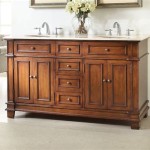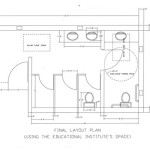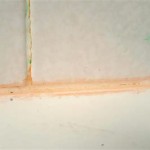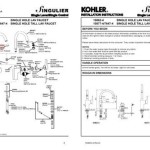The Mystery of the Burning Plastic Smell Emanating from Cold Bathroom Sink Water
A peculiar and disconcerting issue that can plague homeowners is the presence of a burning plastic smell emanating from the cold water tap in a bathroom sink. This olfactory anomaly raises immediate concerns about water quality and potential hazards within the plumbing system. Identifying the source of this smell is crucial for ensuring the safety and potability of the water supply. This article will explore potential causes, investigative steps, and preventative measures related to this specific problem.
The experience of detecting a burning plastic odor from a water source is understandably alarming. It's imperative not to ignore this symptom and to thoroughly investigate the underlying cause before using the water for consumption, hygiene, or other household purposes. The problem could stem from a localized issue within the bathroom plumbing or, in more severe cases, indicate a broader problem affecting the entire municipal water supply or well system.
Potential Sources of the Burning Plastic Smell
Several factors can contribute to the development of a burning plastic smell in cold water, and pinpointing the exact cause often requires a systematic process of elimination. The source could be related to the water source itself, the plumbing materials used in the home, or even nearby environmental factors impacting the water supply.
1. Degrading Plastic Plumbing Components: Certain types of plastic piping, particularly those used in older plumbing systems, can degrade over time, especially when exposed to heat or specific chemicals. This degradation process can release volatile organic compounds (VOCs) that impart a plastic-like or burning smell to the water. Common materials include PVC (polyvinyl chloride) and PEX (cross-linked polyethylene) piping. If the smell is more pronounced when the water has been stagnant, it could point to issues with the pipes located closer to the affected faucet.
2. Water Heater Issues: Although the described scenario specifically concerns the cold water tap, the water heater can indirectly influence the cold water supply. If the water heater is overheating or experiencing internal corrosion, it can release chemicals into the hot water line. In some plumbing configurations, a small amount of backflow or mixing can occur between the hot and cold water lines, particularly in single-handle faucets. This backflow could introduce the contaminated hot water into the cold water supply, causing the odor to be detected even when running only the cold water tap. The anode rod inside the water heater, designed to protect the tank from corrosion, can also emit odors if it reacts with certain bacteria or minerals in the water. These odors can sometimes be mistaken for a burning plastic smell.
3. Contamination from External Sources: The municipal water supply or well water source can become contaminated with pollutants that impart a plastic-like smell. This contamination can originate from industrial runoff, agricultural pesticides, or leaching from underground storage tanks. In areas with aging infrastructure, the water pipes themselves may be corroded or lined with materials that release contaminants into the water. Fracking operations and other forms of resource extraction can also introduce chemicals into groundwater, potentially affecting well water quality. Large-scale contamination will typically affect all water sources in the home, not just a single faucet.
4. Chemical Reactions within the Plumbing System: Certain chemicals used in household cleaning products or drain cleaners can react with the plumbing materials, causing the release of volatile compounds that result in a burning plastic smell. Additionally, if the homeowner recently had plumbing work done, the soldering flux or pipe dope used during the installation could be the source of the odor. These chemicals can take time to dissipate from the system, and repeated flushing of the pipes may be necessary to eliminate the smell.
5. Well Water Specific Contaminants: For homeowners relying on well water, naturally occurring contaminants can contribute to unusual smells and tastes in the water. Iron bacteria, sulfur bacteria, and methane gas are common culprits. While these usually produce earthy, sulfurous, or rotten egg smells, under certain conditions they can interact with other compounds in the water, possibly creating a plastic-like odor. Additionally, nearby agricultural activities, septic systems, or underground fuel tanks can contaminate well water with chemicals that mimic the smell of burning plastic.
Investigative Steps to Identify the Source
Determining the origin of the burning plastic smell requires a systematic approach. Start with the simplest and most readily accessible factors before moving on to more complex investigations. Prioritize safety and avoid drinking or using water that is suspected of contamination.
1. Isolate the Problem: The first step is to determine if the smell is present throughout the house or isolated to the bathroom sink. Check other faucets, showers, and appliances that use water, such as the washing machine and dishwasher. If the smell is present only at the bathroom sink, the problem likely lies within the plumbing system specific to that fixture. If all water sources are affected, the issue could be with the main water line or the source water itself.
2. Run the Water Extensively: Flush the affected faucet for several minutes to see if the smell dissipates. If the odor weakens or disappears after a prolonged flush, it may indicate that the stagnant water in the pipes was the source of the smell. However, if the smell persists even after flushing, the source may be more deeply embedded within the plumbing system or the water source itself.
3. Inspect Plumbing Fixtures and Materials: Carefully examine the faucet, drainpipes, and supply lines under the sink for any signs of damage, discoloration, or degradation. Check for leaks, corrosion, or unusual residues. Inspect the P-trap under the sink to ensure it is properly filled with water, as a dry P-trap can allow sewer gases to enter the bathroom, potentially contributing to unpleasant odors. If you’ve recently had plumbing work done, examine the installed materials and connections.
4. Check the Water Heater: Even though the issue is with the cold water, inspect the water heater for signs of malfunction, such as overheating, leaks, or strange noises. Check the age of the water heater, as older models are more prone to corrosion and sediment buildup. If the water heater has a sacrificial anode rod, consider having it inspected or replaced, as a corroded anode rod can contribute to unpleasant smells in the water. If a backflow preventer is installed, ensure that it is functioning correctly to prevent contaminated hot water from entering the cold water lines.
5. Test the Water Quality: Obtain a water quality testing kit or hire a professional water testing service to analyze the water for contaminants. The test should include parameters such as VOCs, heavy metals, bacteria, and other potential pollutants. If you rely on municipal water, contact your local water authority to inquire about recent water quality reports or any known issues in the water supply. If you have a well, a comprehensive well water test is crucial to identify any potential contaminants from nearby agricultural or industrial activities.
6. Investigate Surrounding Environmental Factors: Consider any recent changes in the surrounding environment that could be affecting the water supply. Construction projects, industrial spills, or agricultural activities nearby could introduce contaminants into the groundwater. If you suspect environmental contamination, contact the local environmental protection agency for further investigation.
Preventative Measures and Remediation
Once the source of the burning plastic smell has been identified, appropriate measures can be taken to remediate the problem and prevent its recurrence. The specific solution will depend on the nature of the contamination and the source of the odor.
1. Replace Aging Plumbing: If the source of the smell is identified as degrading plastic pipes, replacing the old plumbing with newer, more durable materials is recommended. Copper pipes offer a more durable and chemically resistant option. PEX piping is a common alternative, but it's important to choose high-quality PEX that meets relevant safety standards. Ensure proper installation techniques are followed to minimize the risk of leaks or future problems.
2. Water Heater Maintenance: Regularly maintain the water heater to prevent corrosion and sediment buildup. Drain and flush the water heater at least once a year to remove sediment. Have the anode rod inspected and replaced as needed. Consider upgrading to a newer, more efficient water heater if the existing unit is old or malfunctioning.
3. Water Filtration Systems: Installing a water filtration system can effectively remove contaminants from the water supply and improve water quality. Activated carbon filters are effective at removing VOCs, while reverse osmosis systems can remove a broader range of pollutants, including heavy metals and bacteria. Choose a filtration system that is appropriate for the specific contaminants identified in the water test.
4. Well Water Treatment: If the problem is with well water, specialized water treatment systems may be needed. Chlorination, UV disinfection, and ozone treatment can effectively eliminate bacteria and other microorganisms. Aeration systems can remove dissolved gases such as methane and hydrogen sulfide. Iron filters can remove iron bacteria and other iron-related contaminants. Consult with a water treatment specialist to determine the most appropriate system for your specific well water conditions.
5. Proper Chemical Usage and Disposal: Avoid pouring harsh chemicals down the drain, as they can react with the plumbing materials and contaminate the water supply. Use natural cleaning products whenever possible. Dispose of chemicals properly according to local regulations. If plumbing work is done, ensure that the plumber uses appropriate materials and techniques to minimize the risk of chemical contamination.
6. Regular Water Testing: Periodically test the water quality, especially if you rely on well water. This will help detect any potential contamination issues early on and allow for prompt remediation. Follow the recommendations of the water testing laboratory or your local health department regarding the frequency of testing and the specific parameters to be tested.

Cloudy Smelly Or Discoloured Water Quality Help Thames

Moldy Smelling Water From Bathroom Faucet Hometalk

Your Household Water Quality Odors In Uga Cooperative Extension

Why Does My Water Smell 6 Common Smells Their Causes

How To Clear A Clogged Drain Reviews By Wirecutter

Why Water Smells Like Sulfur In One Faucet

Why Is There Low Water Pressure From The Kitchen Faucet Hometalk
What Is The Difference Between Bathroom And Kitchen Water

Insinkerator Indulge Contemporary Series 2 Handle 8 4 In Faucet For Instant Hot And Cold Water Dispenser Chrome F Hc1100c The Home Depot

Insinkerator Hot250 Instant Hot And Cold Water Dispenser 2 Handle 8 21 In Faucet Satin Nickel With Tank Hc250sn Ss The Home Depot
Related Posts







